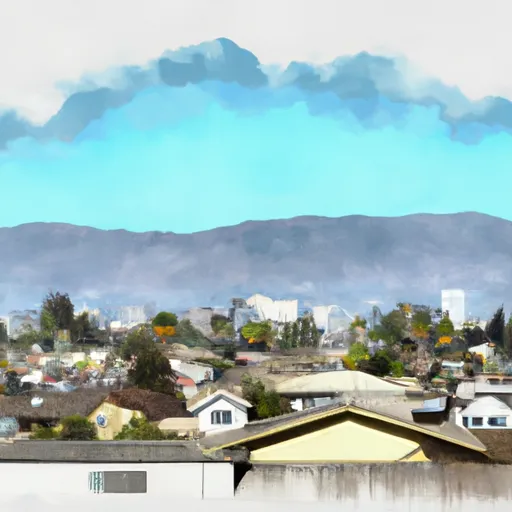-
 Snoflo Premium
Snoflo Premium
Get unlimited access to all our content
With no Ad interruptions! - Start Your Free Trial Login with existing account
Westmorland
Eden Index
Climate
7.0
•
Recreation
3.4
•
Community
0.6
•
Safeguard
4.1/10

Westmorland, California is a small city located in Imperial County, in the southeastern part of the state. The city experiences a desert climate, characterized by hot and dry summers, mild winters, and low annual precipitation. Summers in Westmorland can be scorching, with temperatures often exceeding 100°F (38°C), while winters are generally mild, with temperatures ranging from 50°F (10°C) during the day to around freezing at night.
Hydrologically, Westmorland is situated in the Salton Trough, close to the Salton Sea. While the city itself does not have any major water bodies, it has access to the Salton Sea, which is the largest lake in California. The Salton Sea offers recreational activities such as boating, fishing, and birdwatching.
Outdoor recreation opportunities abound in Westmorland and the surrounding areas. Visitors can explore the nearby Imperial Sand Dunes, a popular destination for off-roading, camping, and hiking. Another attraction is the nearby Ocotillo Wells State Vehicular Recreation Area, which offers off-roading and camping opportunities. Additionally, the Coyote Mountains Wilderness Area provides scenic hiking trails and opportunities for wildlife viewing.
Overall, Westmorland, California offers a desert climate, limited hydrological resources, and a range of outdoor activities for nature enthusiasts.
What is the Eden Index?
The Snoflo Eden Index serves as a comprehensive rating system for regions, evaluating their desirability through a holistic assessment of climate health, outdoor recreation opportunities, and natural disaster risk, acknowledging the profound impact of these factors on livability and well-being.
Climate Health Indicator (CHI): 7.0
Westmorland receives approximately
81mm of rain per year,
with humidity levels near 74%
and air temperatures averaging around
23°C.
Westmorland has a plant hardyness factor of
9, meaning
plants and agriculture in this region tend to thrive here all year round.
By considering the ideal temperature range, reliable water supplies, clean air, and stable seasonal rain or snowpacks, the Climate Health Indicator (CHI) underscores the significance of a healthy climate as the foundation for quality living.
A healthy climate is paramount for ensuring a high quality of life and livability in a region, fostering both physical well-being and environmental harmony. This can be characterized by ideal temperatures, reliable access to water supplies, clean air, and consistent seasonal rain or snowpacks.
Weather Forecast
Streamflow Conditions
Salton Sea
Area Rivers
Salton Sea
Snowpack Depths
Salton Sea
Reservoir Storage Capacity
Salton Sea
Groundwater Levels
Recreational Opportunity Index (ROI): 3.4
The Recreational Opportunity Index (ROI) recognizes the value of outdoor recreational options, such as parks, hiking trails, camping sites, and fishing spots, while acknowledging that climate plays a pivotal role in ensuring the comfort and consistency of these experiences.
Access to outdoor recreational opportunities, encompassing activities such as parks, hiking, camping, and fishing, is crucial for overall well-being, and the climate plays a pivotal role in enabling and enhancing these experiences, ensuring that individuals can engage in nature-based activities comfortably and consistently.
Camping Areas
| Campground | Campsites | Reservations | Toilets | Showers | Elevation |
|---|---|---|---|---|---|
| Slab City | None | 71 ft | |||
| Bombay Beach - Salton Sea State Rec Area | None | -226 ft | |||
| El Centro NAF Military | None | -42 ft | |||
| Red Hill Marina | 40 | -225 ft | |||
| Wiest Lake | None | -157 ft |
Catastrophe Safeguard Index (CSI):
The Catastrophe Safeguard Index (CSI) recognizes that natural disaster risk, encompassing floods, fires, hurricanes, and tornadoes, can drastically affect safety and the overall appeal of an area.
The level of natural disaster risk in a region significantly affects safety and the overall livability, with climate change amplifying these risks by potentially increasing the frequency and intensity of events like floods, fires, hurricanes, and tornadoes, thereby posing substantial challenges to community resilience and well-being.
Community Resilience Indicator (CRI): 0.6
The Community Resilience Indicator (CRI) recognizes that education, healthcare, and socioeconomics are crucial to the well-being of a region. The CRI acknowledges the profound impact of these elements on residents' overall quality of life. By evaluating educational resources, healthcare accessibility, and economic inclusivity, the index captures the essential aspects that contribute to a thriving community, fostering resident satisfaction, equity, and social cohesion.

